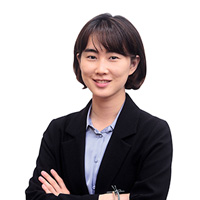[Our Museums] Seek hidden tales of Korean masks at Hahoe Mask Museum
By Kim Hae-yeonPublished : Nov. 14, 2023 - 12:36

ANDONG, North Gyeongsang Province -- At the heart of Korea's dynamic performance culture is the captivating tradition of "tal" and "talchum" -- masks and mask dancing.
This form of masked performance art unveils a hidden world of storytelling and symbolism, enchanting audiences.
Since the period of the Three Kingdoms, talchum has been more than entertainment. Masks have the power to empower individuals to air secrets, stir up deep emotions and recount age-old tales, creatively challenging the social hierarchy through fictional narratives.
Talchum was identified as a UNESCO Intangible Cultural Heritage in November 2022.
The Hahoe Mask Museum is located inside the well-known Hahoe Folk Village of Andong, North Gyeongsang Province.
The museum offers a unique exploration of the rich tradition of Korean masks and mask dance dramas. The village itself is celebrated for its Hahoebyeolsingut, a genre of mask dance drama rooted in shamanistic rites that honor the communal spirits and banish malevolent forces.
The museum was founded in 1995 by Kim Dong-pyo, a master artisan of the Hahoetal masks.
Kim's unwavering passion for Korean masks led him to a lifetime of studying and collecting masks from around the world.
His dedication extended to crafting traditional Hahoe masks especially for Hahoebyeolsingut. Today, over 90 percent of tal used in talchum performances in Andong have been made by Kim, according to the museum. Beyond Korea, Kim's travels have taken him to Southeast Asia, Europe and Africa, amassing a vast collection of foreign masks showcased year-round.


The two-floor museum has several permanent exhibition halls as well as a special exhibition hall.
The main exhibition hall features a variety of traditional Korean masks used for either entertainment or ritual purposes.
Stories of Bongsan talchum, Namsadangnori, Tongyeong Ogwangdaenori, Songpa Sandaenori, Eunyul talchum, Gangnyeong talchum and the masks used in each mask dance drama can be found in detail at the exhibition.
Ogwangdaenori originated from Tongyeong, South Gyeongsang Province. "Ogwandae," meaning five clowns, consists of five different masked performers in five stories that mock nobility in a biting satire. The stories see the commoners and nobles achieving a sense of harmony by the end.
"Each mask embodies distinct roles, from yangban (aristocrats) to seonbi (scholars) and halmi (old women) to baekjeong (butchers)." a chief researcher at the museum told The Korea Herald. "Visitors can have fun identifying the roles by examining the masks' appearances, and delve deeper into their narratives."


The second section showcases masks collected from around the world, offering insights into how different regions have used masks as symbols to portray their world. The section also features commedia dell'arte masks from Italian masquerades, Venice's Carnival masks, Spanish masks and even contemporary Halloween masks from around the world.
Since 2010, the museum has regularly been updating the exhibitions on the second floor, aiming to attract younger people, emphasizing that tal and talchum are not only relics of the past.
As visitors pass through the corridor, a separate section presents masks of diverse African tribes, South Pacific islands, Native Americans and Mexico.
With around 800 masks on display and 3,000 in the vault, the museum is a treasure trove of global cultural heritage and artistic expression.


The museum is currently hosting its annual special exhibition, the Andong Hahoe Print Exhibition. Works by six engraving artists that express images of tal from diverse perspectives are on display. The works are mostly printed on hanji, Korean mulberry paper. The special exhibition continues through April 30, 2024.
Hahoe Mask Museum operates from 9:30 a.m. to 6 p.m. daily, with free admission for all ticket holders to Hahoe Village. For those who want to participate in activity sessions, a 30-minute tal making session costs 5,000 won per person, and a 10-minute tal-shaped key ring making experience is 4,000 won per person.
------
This is the ninth article in a series that introduces a variety of unique museums that focus on a diverse range of themes, from art and science to history and technology. — Ed.








![[Today’s K-pop] Blackpink’s Jennie, Lisa invited to Coachella as solo acts](http://res.heraldm.com/phpwas/restmb_idxmake.php?idx=644&simg=/content/image/2024/11/21/20241121050099_0.jpg&u=20241121172748)









![[Today’s K-pop] Babymonster logs 100m views with ‘Drip’ music video](http://res.heraldm.com/phpwas/restmb_idxmake.php?idx=642&simg=/content/image/2024/11/22/20241122050051_0.jpg&u=20241122172213)